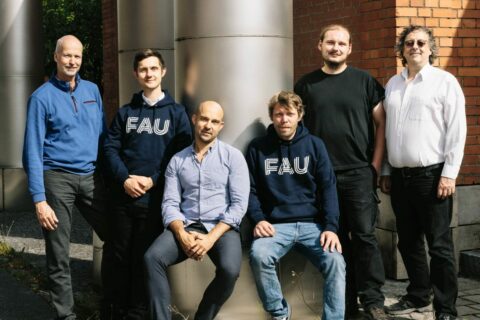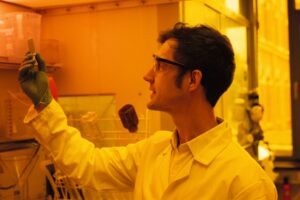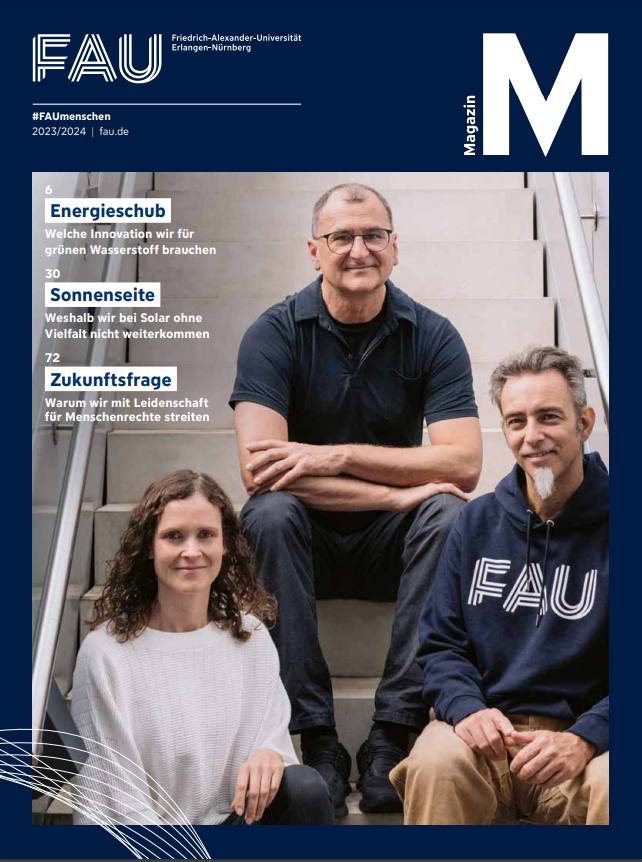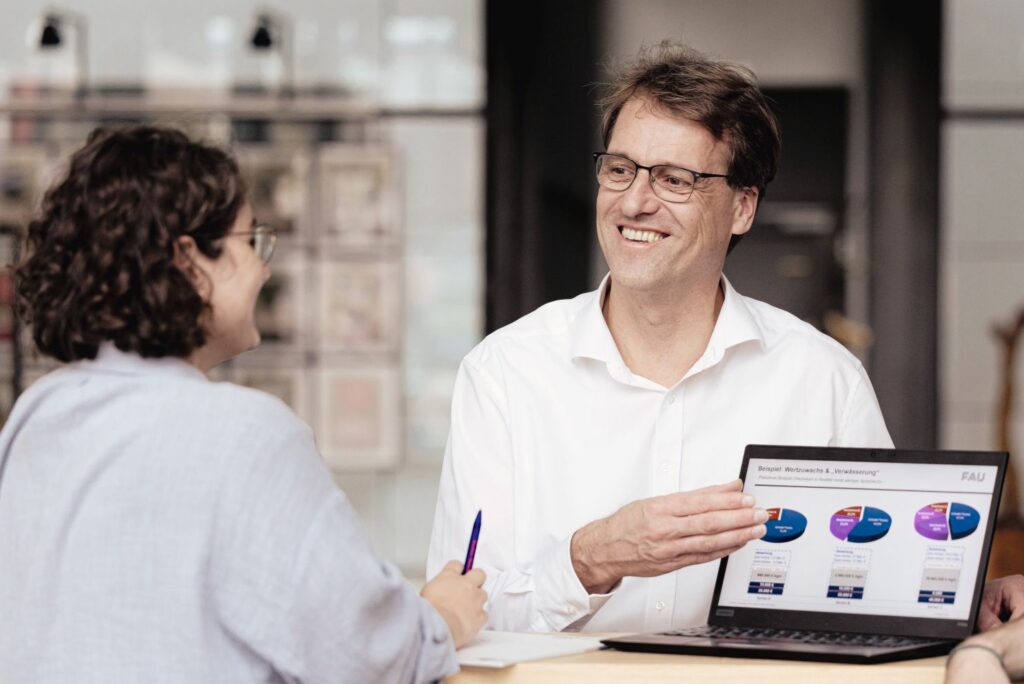High-precision antennas

FAU scientists work for NASA
One room, three young researchers and lots of ideas. This is how it all started. By now, Golden Devices’ customers include automobile manufacturers, the aerospace industry and even NASA.
A nicely renovated brick building in Röthelheimpark in Erlangen. In the hallway, three tall glass cabinets stand out that contain delicate metallic objects that look like pieces of jewelry. They are, in fact, extremely light miniature antennas made of plastic with tiny cavities and a special metallic coating. They will soon be used for improved environmental perception via radar, for improved radiolocation systems as well as for ultrafast data transfer in driverless vehicles, drones or satellites. “These are some exhibits that we use for trade shows,” explains information and communication technology engineer Konstantin Lomakin.
3D printing with great potential

Lomakin is Chief Technology Officer of Golden Devices GmbH, which he co-founded with mechatronics engineer Dr. Gerald Gold, RF and microwave engineering specialist Andreas Hofmann and industrial engineering and management specialist Mark Sippel. They all worked together on research projects at the Chair of High Frequency Engineering (LHFT) at FAU. “During this time we discovered the limits of established technology, for example of circuit boards in high frequency technology,” says Gerald Gold. “When we first used 3D printing to manufacture components for high frequency applications in 2016, we quickly realized the technological and economic potential of additive manufacturing.”
Funding and patents
The idea of a start-up was born, the first prototypes were made with the 3D printer, but the manufacturing process quickly reached its limits. Applications for funding were made in order to further develop the technology and to make it ready for the market. The start-up team managed to secure around five million euros of funding, including from sources such as the Bavarian Research Foundation and the EXIST research transfer program of the Federal Government. At the same time, they made around a dozen patent applications and improved their entrepreneurial skills. “The company was set up in 2022 and we now have seven employees,” says CEO Mark Sippel. “Our products hit the nail on the head as high frequency technology is currently booming.” The company’s clients now include big names from sectors such as the automobile industry and the international aerospace industry. Even NASA is among them and is carrying out tests with the antennas.
FAU provides a good environment for start-ups
The founders received and continue to receive support from the Chair of LHFT, Prof. Dr. Martin Vossiek, and Prof. Dr. Klaus Helmreich, who is also from LHFT. They are both company partners, and with their contacts in industry, their experience in running their own companies and their scientific networks, are an important source of support from FAU. “We think it is important not only to impart specialist skills, but also to promote a feel for the market and the courage to run a company,” explains Klaus Helmreich. “The story of Golden Devices shows how successful the interplay of research, teaching and application can be.”
Contact with university will remain
During the coming months, the company will move to larger premises to enable it to start large scale series production of its antennas for radar and communication systems as well as other innovative high frequency components. “The company and the Chair will continue to collaborate for the purposes of driving innovation,” says Martin Vossiek. This means Konstantin Lomakin and Mark Sippel continue to work in LHFT’s premises with doctoral candidates and students who are already conducting research into the next generation of innovative high frequency components. Partner Gerald Gold still works at the Institute as he is head of the “Microwave Assembly and Interconnects” research group at LHFT. During lectures, Klaus Helmreich and Martin Vossiek are continuously on the look out for young researchers such as students who want to work with them and write their theses about exciting topics.
by Susanne Stemmler
The advisor for start-ups
Christoph Heynen, deputy Head of Outreach Support and head of the Start-up and Entrepreneurship working group at FAU, supported Golden Devices during the start-up phase. Heynen and his team provided assistance with the EXIST funding application as well as with drafting a business plan and gave valuable feedback on interim presentations. In addition, FAU Patent Management, which is also based at Outreach Support, is responsible for securing patents for the new technology and made the patent applications.
Heynen set up the Start-up Consulting Service at FAU in the early 2000s. His interdisciplinary team of eight employees is an internal FAU consulting service and training provider. The working group receives around 40 ideas for start-ups and projects every year. “Some of them are in the very early stages,” explains Christoph Heynen. “We look at potential business models together, search for sources of funding and provide training for the entrepreneurs so that the start-up has a solid foundation.”
This article is part of the FAU Magazin
A university thrives because of the people who research, study, teach and work there. A university is supported by people who are connected to it as alumni, friends and sponsors and who are committed to promoting its interests all over the world.
They all contribute their unique talents, skills and perspectives. It is this diversity that makes our FAU a place of innovation, a place where many talented individuals tackle the major challenges of our times together, and a place where they keep finding answers.
Read more articles online Download: FAU Magazin (PDF)
